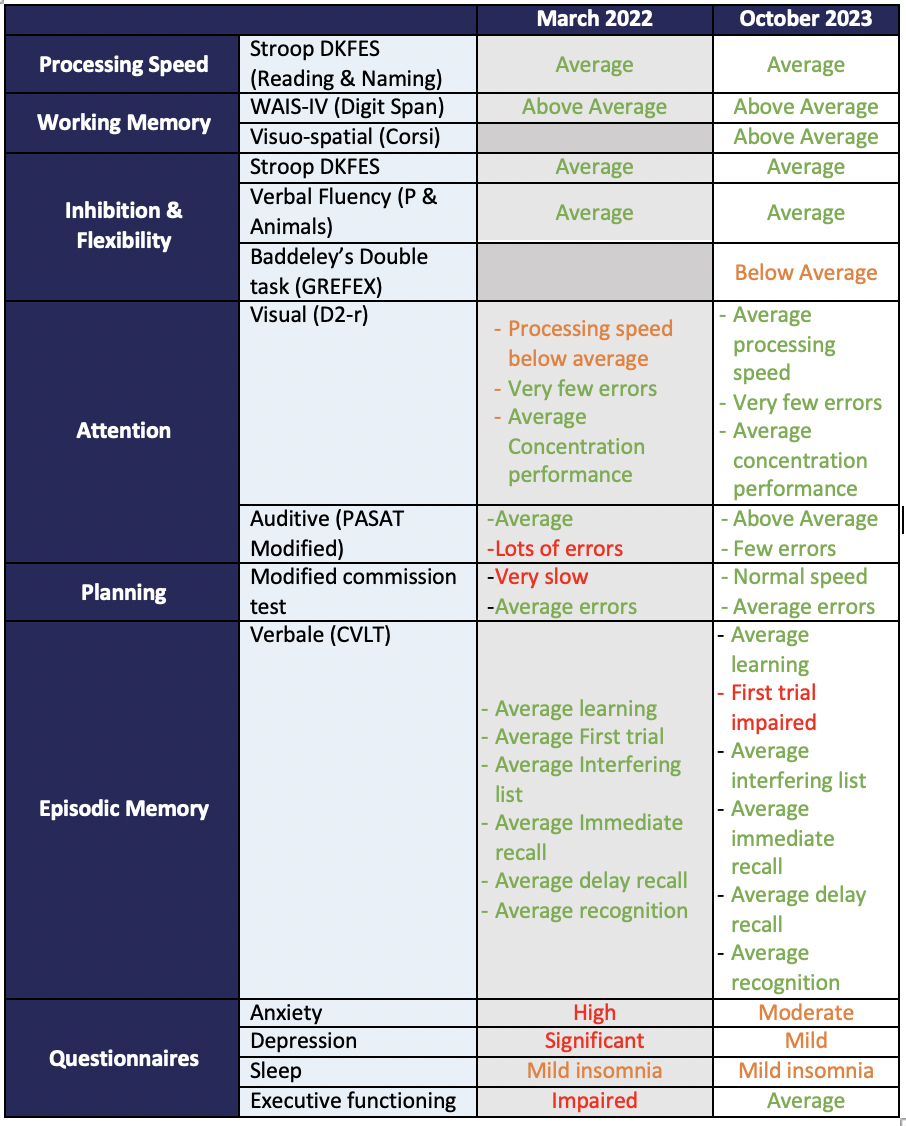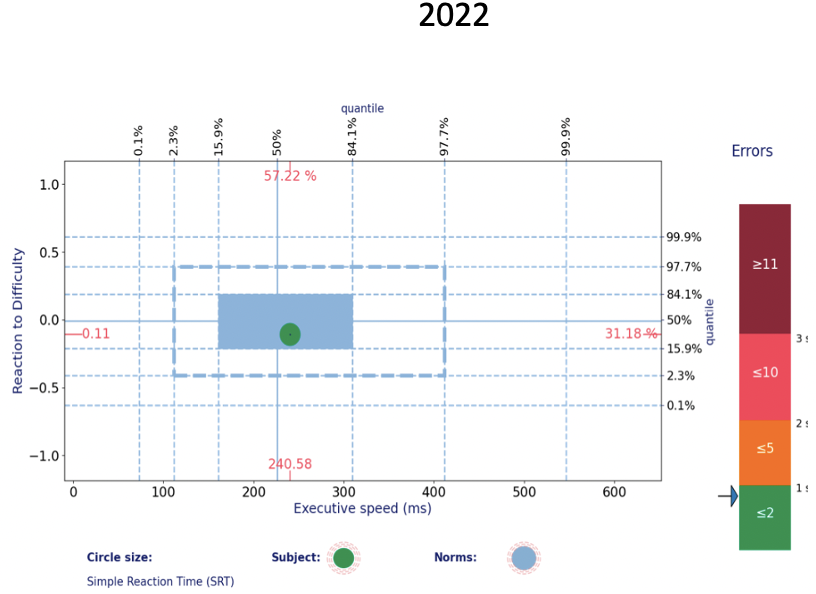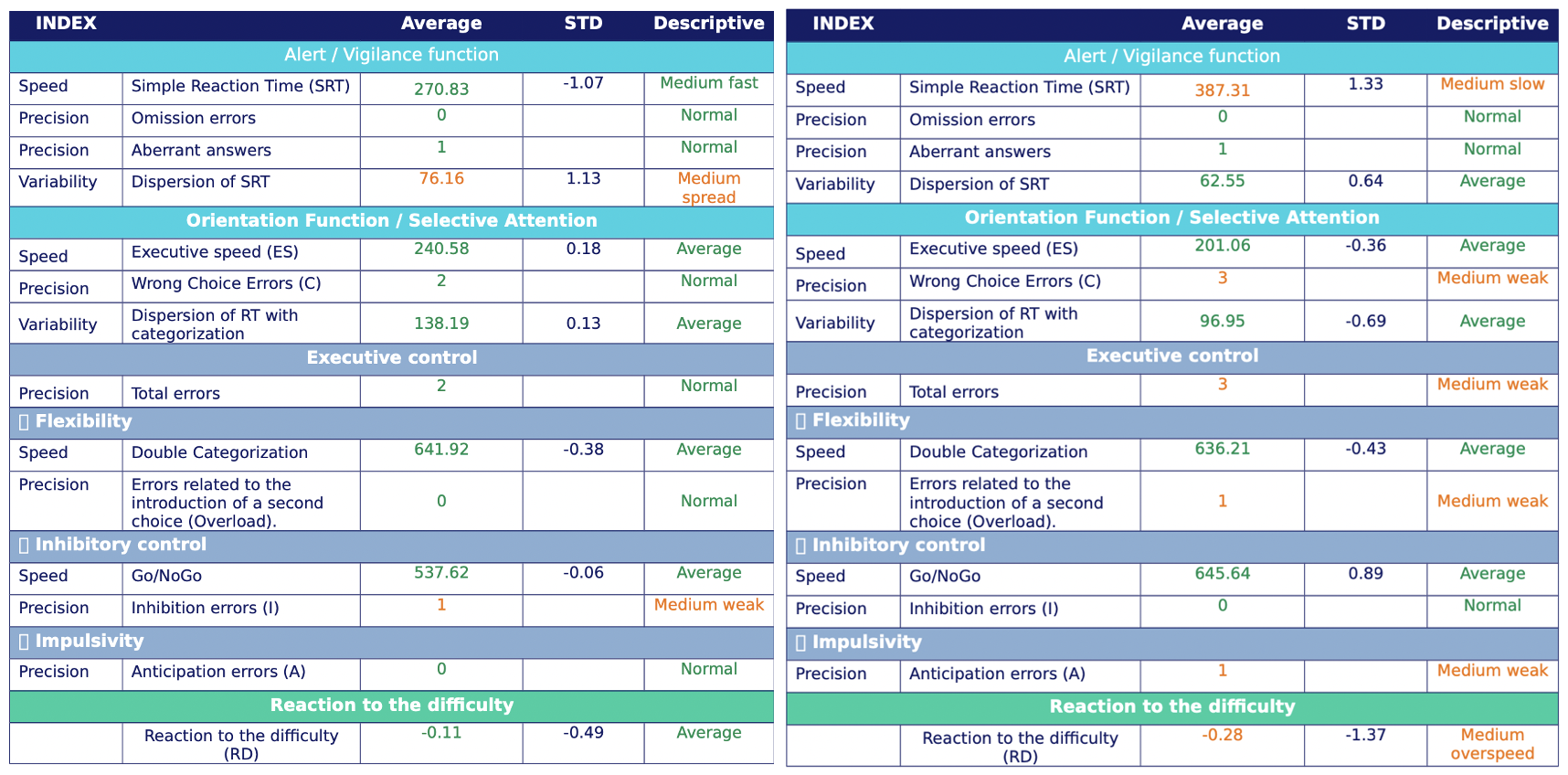CLINICAL CASE: Mrs. D, 56 YEARS-OLD
Context : Mrs. D is a 55-year-old woman with a very high socio-cultural level who was infected with COVID-19 in October 2020. She took sick leave following the infection and resumed part-time therapeutic work in October 2022. Complaints related to fatigue and the spectrum of executive and attentional functions (forgetfulness of tasks, difficulty in managing multiple tasks, slowing down) persist, although there has been some improvement.
Since the infection, previously mild sleep disturbances have intensified. Mrs. D received treatment with antidepressants, which has now been discontinued. An initial neuropsychological assessment was conducted in March 2022.
A follow-up assessment was carried out in October 2023 at the request of the patient to understand the persistence of the complaint.
COGNITIVE ASSESSMENT - March 2022

WAIS-IV :
The cognitive assessment conducted in March 2022 highlights Mrs. D's functioning at a high to very high level, despite the heterogeneity of her performances. The profile reveals a strength in the area of verbal reasoning, which falls within the very superior range. The rest of the profile is situated between high average and the upper range.

In March 2022,, the neuropsychological assessment identified slight executive and attentional fragilities with overload effects, particularly during complex tasks (D2-R and PASAT audio) in terms of attention. Mrs. D is overwhelmed. The rest of her performances are within the normal range but contrast with her intellectual abilities, which are in the upper ranges, thereby substantiating the patient's reported complaint, especially her executive slowing (Modified Commissions Test, Stroop, D2-R, etc.). Anxiodepressive elements are also significant and associated with sleep disturbances.
The reevaluation in October 2023 reveals an overall improvement in Mrs. D's performance, normalizing most of the areas previously described as fragile in the previous assessment. The overload effects have generally disappeared, but double-tasking remains costly for this patient, who appears slowed down.The implementation of effective executive strategies takes time (CVLT Trial 1). There is an improvement in overall anxiodepressive symptomatology, despite scores that remain borderline. Sleep disturbances persist without improvement.
MindPulse test:


In 2022, MindPulse highlights balanced performances, without executive or perceptuo-motor (TRS) slowing and with accuracy within the average range. The reaction to difficulty appears normal.
In 2023, Mrs. D presents this time a moderate perceptuo-motor slowing, contrasting with satisfactory executive speed. Precision is slightly compromised, and the reaction to difficulty indicates a slight overspeed.

In 2022, reaction times analysis reveals significant dispersion, especially in the first part, indicating slightly impaired vigilance and in association with an aberrant response.
Additionally, two choice errors are noted in the second and third parts of the MindPulse, indicating an impairment in inhibition in Mrs. D.
In 2023, the dispersion has normalized, but Mrs. D makes an additional error indicating a fragility in executive control that continues to be oriented towards inhibition.
The aberrant response is again found in the first part.

Overall, in 2022, Mrs. D's MindPulse appears generally balanced but reveals a slight impairment in vigilance and inhibition capacities. Speed measures are within the average, but Mrs. D shows some variability in her performances.
In 2023, the MindPulse is marked by a moderate perceptuo-motor slowing, which remains within the norms, and is associated with a persistently marked executive fragility, particularly in inhibition capacities. Vigilance and inhibitory control remain the two areas of fragility, although the direction of slight imbalance has changed since the initial assessment.
Conclusion :
The reassessment shows a gradual improvement in Mrs. D's executive and attentional performances, although some fragilities persist, particularly in comparison to her cognitive profile, which is higher than average.
The change in performances within the MindPulse, and especially the newly observed "slowing," can be explained by the discontinuation of the patient's antidepressant medication. Indeed, taking antidepressants leads to a slight acceleration of response times in patients with depressive disorders, whereas in the absence of medication, these same patients generally exhibit a slight slowing of response times, as observed in Mrs. D. This observation also serves as a reminder that a result in the low Average (orange zone) on the MindPulse remains within the norms, although it indicates a slight fragility.
The persistence, albeit in progression, of executive fragilities in Mrs. D can be explained by the natural evolution of the sequelae of long-COVID and the mood and sleep disorders that still exist in her case.. The MindPulse provides a sensitive insight into the clinical and subclinical variations in decision-making profiles in a high-functioning patient.
